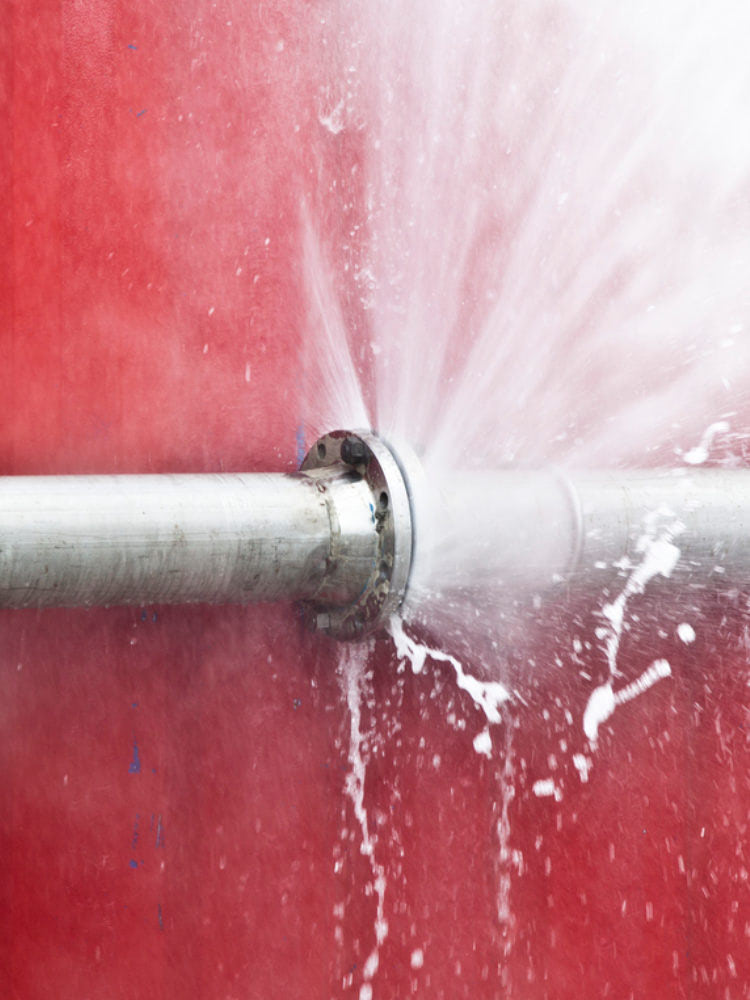Identify A Half-Dozen of Principal Leak Triggers Inside The House
Identify A Half-Dozen of Principal Leak Triggers Inside The House
Blog Article
What're your thoughts on How to Find Water Leaks?

Leaks not just trigger waste of water however can likewise cause unnecessary damage to your residence as well as promote undesirable natural growth. Water leakages might go unnoticed considering that many of the pipework in our home is hidden. By looking as well as comprehending for day-to-day scenarios that create leaks, you can safeguard your house from future leaks and unnecessary damages. Today, we will certainly consider 6 leakage triggers that may be causing your pipelines to trickle.
Instant temperature level changes.
Extreme temperature changes in our pipes can cause them to expand as well as get suddenly. This expansion as well as tightening may create cracks in the pipes, particularly if the temperature level are listed below freezing.
Rusty water systems
As time passes by, your plumbing system ages and also corrosion such as corrosion might start eating away the pipes. This could be the cause of staining or bending on your pipes. This calls for an inspection with your plumber instantly. Take into consideration changing the pipes because they are at a greater threat of deterioration than the newer versions if our plumbing system is old.
Defective Pipe Joints
The factor at which your pipes attach is frequently the weakest link in the waterline. Pipe joints can degrade gradually, causing water leakages. The bulk of pipeline joints are not conveniently noticeable. If you have loud pipelines that make ticking or banging sounds, specifically when the hot water is activated, your pipeline joints are possibly under a lot of pressure. It is a good idea to have your plumber examine your system once a year.
Encroaching roots
A lot of water leaks begin outside the home rather than inside it. You could observe wet spots or sinkholes in your yard, and that could imply that tree origins are getting into water lines causing water to permeate out.
Poor Water Connectors
Sometimes, a leak can be brought on by loose pipes as well as pipelines that supply your home appliances. Usually, shifting is what creates the loose water Links. You might locate in the case of a cleaning equipment, a pipe might spring a leak as a result of trembling during the spin cycle. In case of a water connections leakage, you may see water running directly from the supply line or puddles around your devices.
Clogged Drains
Blocked drains pipes could be frustrating and inconveniencing, however they can in some cases wind up causing an overflow resulting in rupture pipes. Keep eliminating any kind of materials that may drop your drains pipes that can clog them to prevent such troubles.
All the above are root causes of leaks but not all water leaks arise from plumbing leakages; some leaks might come from roof covering leakages. All leaks ought to be fixed immediately to avoid water damage.
Leaks not only trigger waste of water however can likewise trigger unnecessary damages to your house and promote undesirable organic growth. By recognizing and also looking for daily scenarios that cause leaks, you can secure your house from future leaks and also unneeded damage. Today, we will look at six leakage triggers that might be causing your pipes to drip.
At times, a leak can be triggered by loosened pipes and pipes that supply your devices. In case of a water connections leak, you may notice water running straight from the supply line or puddles around your devices.
How To Check For Water Leak In Your Home
How To Check for Leaks
The average household's leaks can account for nearly 10,000 gallons of water wasted every year and ten percent of homes have leaks that waste 90 gallons or more per day. Common types of leaks found in the home are worn toilet flappers, dripping faucets, and other leaking valves. These types of leaks are often easy to fix, requiring only a few tools and hardware that can pay for themselves in water savings. Fixing easily corrected household water leaks can save homeowners about 10 percent on their water bills.
To check for leaks in your home, you first need to determine whether you're wasting water and then identify the source of the leak. Here are some tips for finding leaks:
Take a look at your water usage during a colder month, such as January or February. If a family of four exceeds 12,000 gallons per month, there are serious leaks.
Check your water meter before and after a two-hour period when no water is being used. If the meter changes at all, you probably have a leak.
Identify toilet leaks by placing a drop of food coloring in the toilet tank. If any color shows up in the bowl after 10 minutes, you have a leak. (Be sure to flush immediately after the experiment to avoid staining the tank.)
Examine faucet gaskets and pipe fittings for any water on the outside of the pipe to check for surface leaks.
Undetected water leaks can happen without the home or business owner even realizing. If you suspect a water leak, but not able to find the source. It is time to contact a professional water leak detection service, The Leak Doctor.
How To Find a Water Leak In Your Home
https://www.leakdoctor.com/blog/How-To-Check-For-Water-Leak-In-Your-Home_AE197.html

We were shown that report on Most Common Causes of Leaky Pipes through a good friend on a different domain. Kindly set aside a second to distribute this blog post if you enjoyed it. We enjoy reading our article about How to detect water leaks in your home.
Quick response? Dial! Report this page